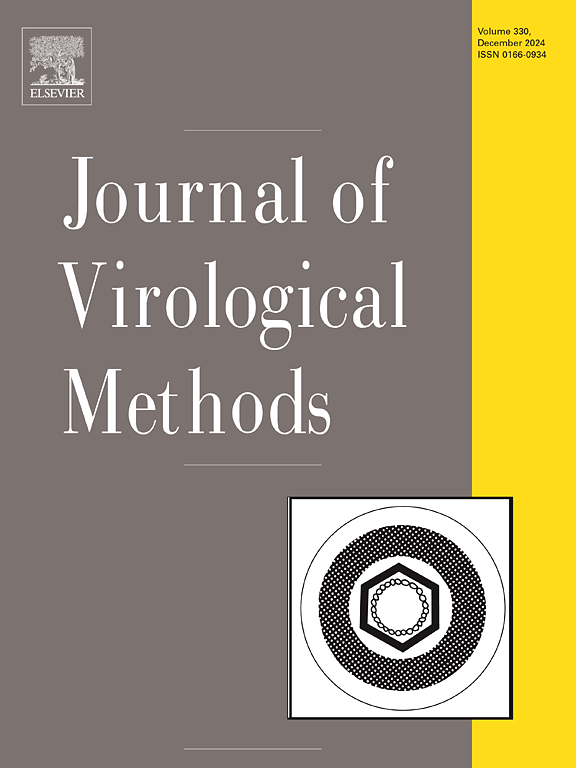Development and validation of a point-of-care molecular assay for sacbrood virus (SBV) diagnosis in apiaries
IF 2.2
4区 医学
Q3 BIOCHEMICAL RESEARCH METHODS
引用次数: 0
Abstract
Sacbrood virus (SBV) is a significant pathogen affecting honeybee health, leading to substantial economic losses in apiculture. Although traditional methods, like reverse transcription quantitative polymerase chain reaction, offer accurate detection and quantification of SBV, they have limitations for use in field settings, such as apiaries. Here, we developed and evaluated the XQ SBV Dx Kit as a diagnostic tool for the XQ Station point-of-care (POC) RT-qPCR device, which integrates nucleic acid extraction, gene amplification, and detection for on-site molecular diagnosis. Diagnostic performance was assessed using clinical samples infected with SBV and was compared with that of standard laboratory-based RT-qPCR. The limit of detection (LOD) for both methods was 102 copies per reaction, with the XQ SBV Dx Kit consistently demonstrating superior sensitivity, detecting 83.3 % of replicates at 101 copies per reaction compared to 58.3 % with RT-qPCR. Specificity testing against 11 other honeybee pathogens confirmed the absence of cross-reactivity, highlighting the diagnostic precision of the XQ SBV Dx Kit. Clinical evaluation revealed 98.4 % sensitivity and 97.0 % specificity, validating its reliability for field applications. Overall, the XQ SBV Dx Kit is an essential advancement in honeybee health management, offering practical and timely solutions for supporting sustainable apicultural practices.
求助全文
约1分钟内获得全文
求助全文
来源期刊
CiteScore
5.80
自引率
0.00%
发文量
209
审稿时长
41 days
期刊介绍:
The Journal of Virological Methods focuses on original, high quality research papers that describe novel and comprehensively tested methods which enhance human, animal, plant, bacterial or environmental virology and prions research and discovery.
The methods may include, but not limited to, the study of:
Viral components and morphology-
Virus isolation, propagation and development of viral vectors-
Viral pathogenesis, oncogenesis, vaccines and antivirals-
Virus replication, host-pathogen interactions and responses-
Virus transmission, prevention, control and treatment-
Viral metagenomics and virome-
Virus ecology, adaption and evolution-
Applied virology such as nanotechnology-
Viral diagnosis with novelty and comprehensive evaluation.
We seek articles, systematic reviews, meta-analyses and laboratory protocols that include comprehensive technical details with statistical confirmations that provide validations against current best practice, international standards or quality assurance programs and which advance knowledge in virology leading to improved medical, veterinary or agricultural practices and management.

 求助内容:
求助内容: 应助结果提醒方式:
应助结果提醒方式:


